Differentiable Physical Modeling for Parameter Estimation
Objectives
- Categorize existing approaches for parameter estimation in physical modeling
- Interpret the role of differentiable simulation and neural networks
- Estimate control parameters by implementing the differentiable plucked string simulation
Parameter Estimation in Physical Modeling
Physical Modeling Sound Synthesis
- Synthesized samples (Smith 1992)
![]()
![]()
Sound examples from https://ccrma.stanford.edu/
~jos/waveguide/Sound_Examples.html
The inverse problem
- Objective:
- given a known observation (target sound)
- find the simulator’s input parameters
- that can closely resemble the target sound.
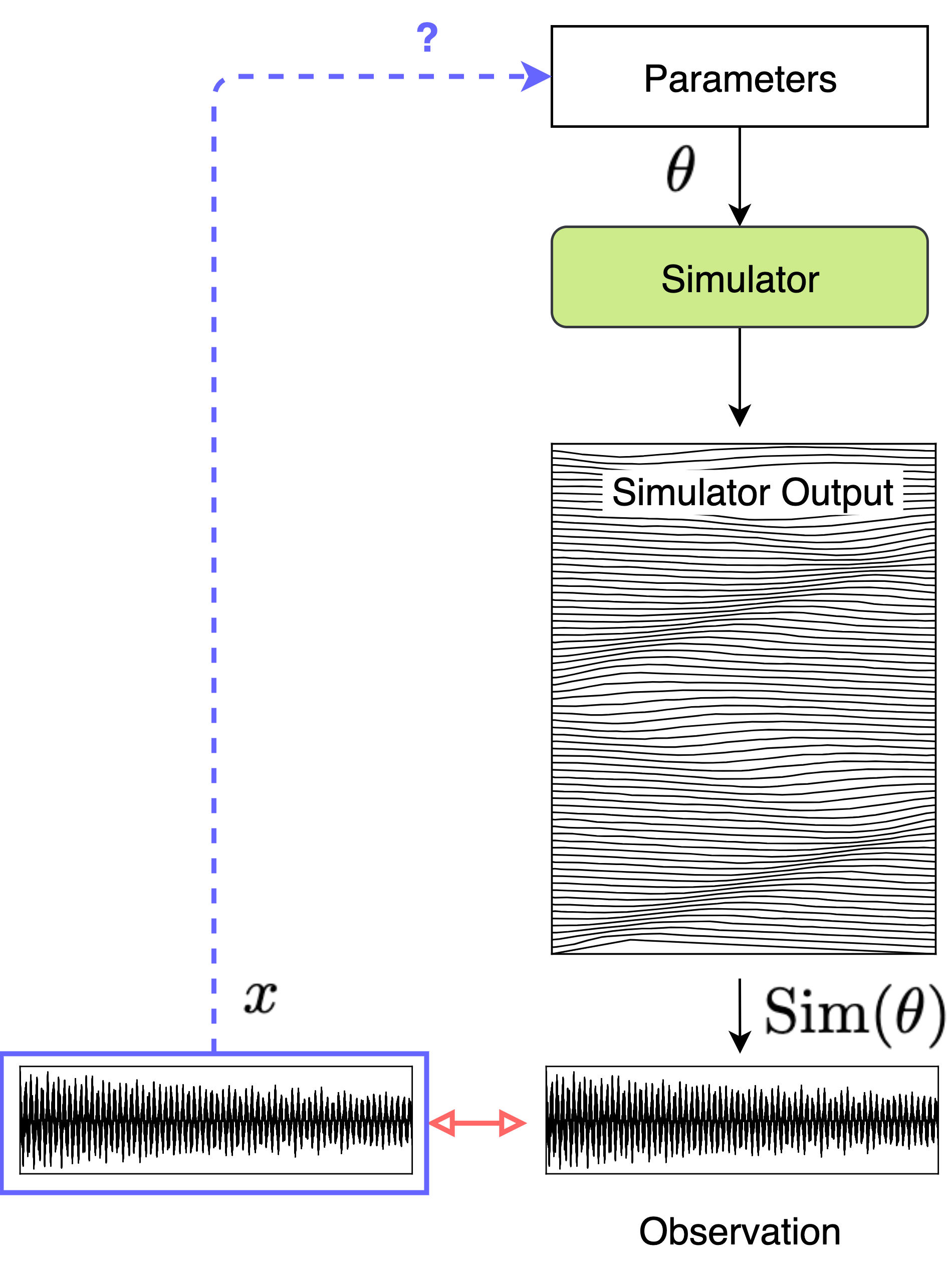
The parameter estimation
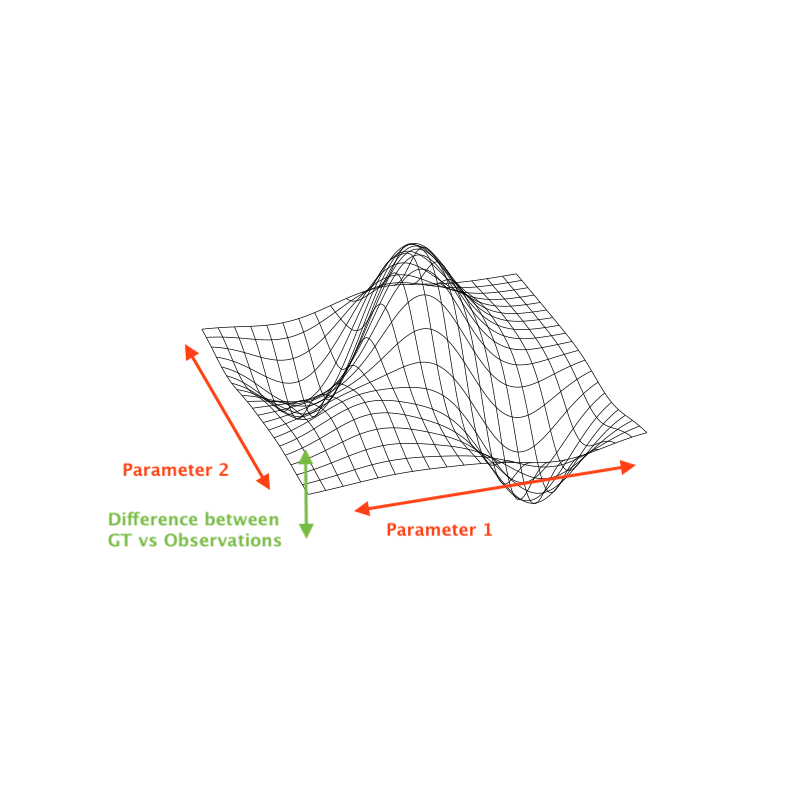
- Point estimation
- To find the exact parameter “data point”
- cf. frequentist interpretation
![]()
- Distribution estimation
- To find a generator that can draw parameter “set”
- cf. Bayesian interpretation
![]()
Differentiable Simulation for Parameter Estimation
FDTD Example (1D Wave Equation)
The 1D wave equation with a point source excitation \[ \frac{\partial^2 u}{\partial t^2} = \gamma^2 \frac{\partial^2 u}{\partial x^2} + \delta(x - x_F)\cdot f_\tau(t - t_F) \]
- \(x_F=\) excitation location, \(f_\tau(t - t_F)=\) excitation signal
\[ \mathbf{U}[t_{+\Delta t}] = \left(2\mathbf{I} + \lambda^2\mathbf{D}_{xx} \right) \mathbf{U}[t] - \mathbf{U}[t_{-\Delta t}] + (\Delta t)^2 \mathbf{E}_{ii}\mathbf{f}[t] \]
- Grid points: \(N_x,N_t\)
- \(\mathbf{E}_{ii} = \mathbf{e}_i\mathbf{e}_i^\top \in \mathbb{R}^{N_x \times N_x}\)
- \(\mathbf{I} \in \mathbb{R}^{N_x \times N_x}\)
- \(\mathbf{D}_{xx} \in \mathbb{R}^{N_x \times N_x}\): 2nd order difference
- \(\mathbf{U}[t] := [\mathbf{u}[t, x_1], \mathbf{u}[t, x_2], \ldots, \mathbf{u}[t, x_{N_x}]]^\top \in \mathbb{R}^{N_x}\)
FDTD Example (1D Wave Equation) \(x_F\)
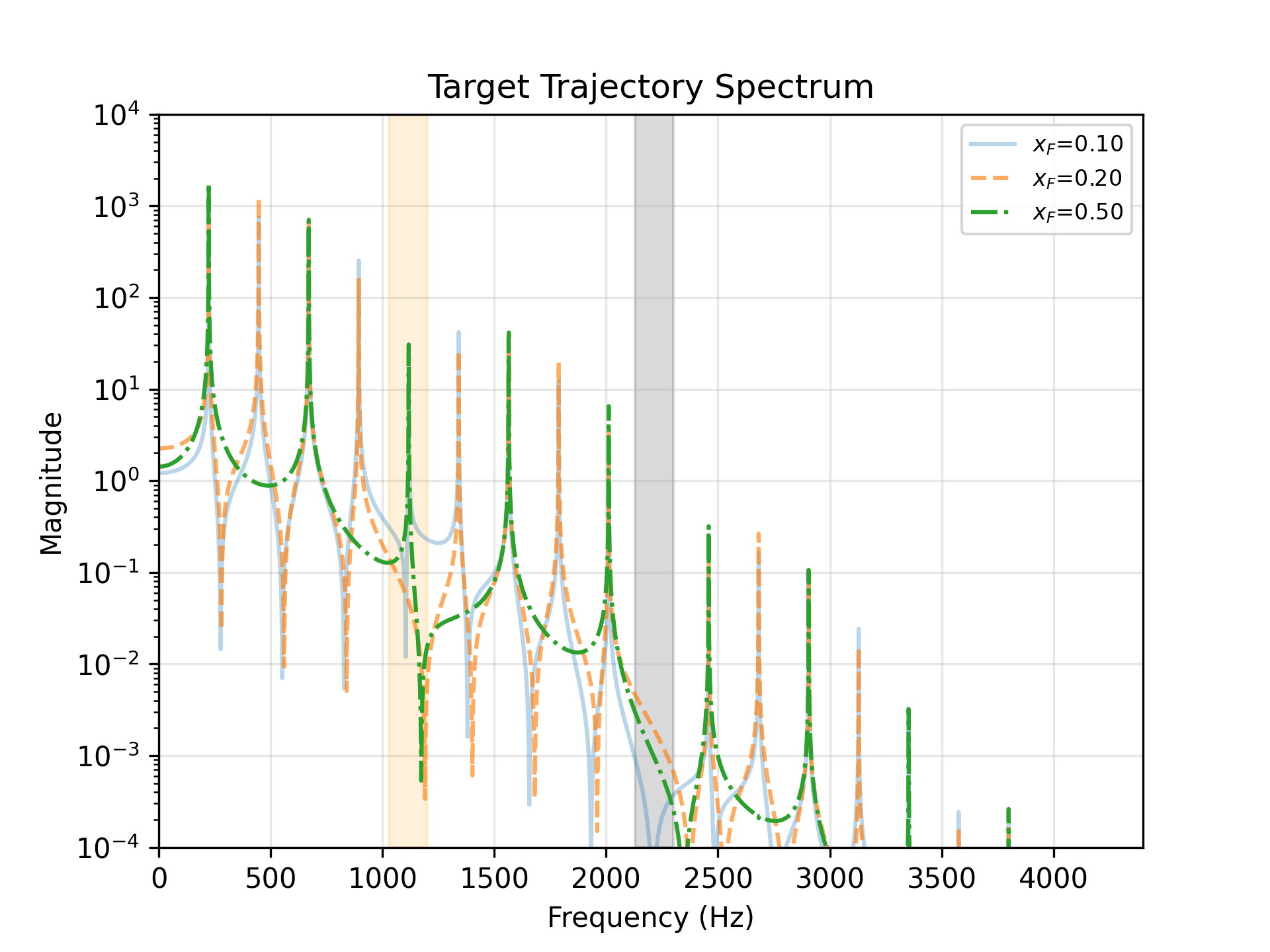
Spectrum of the string with \(F_0=220\) Hz, output picked up at \(x=0.5\)
Forcing location \(x_F\)
- \(x_F=0.1\)
Missing \(10 n\times F_0\) - \(x_F=0.2\)
Missing \(5 n\times F_0\) - \(x_F=0.5\)
Missing \(2 n\times F_0\)
FDTD Example (1D Wave Equation) \(t_F\)
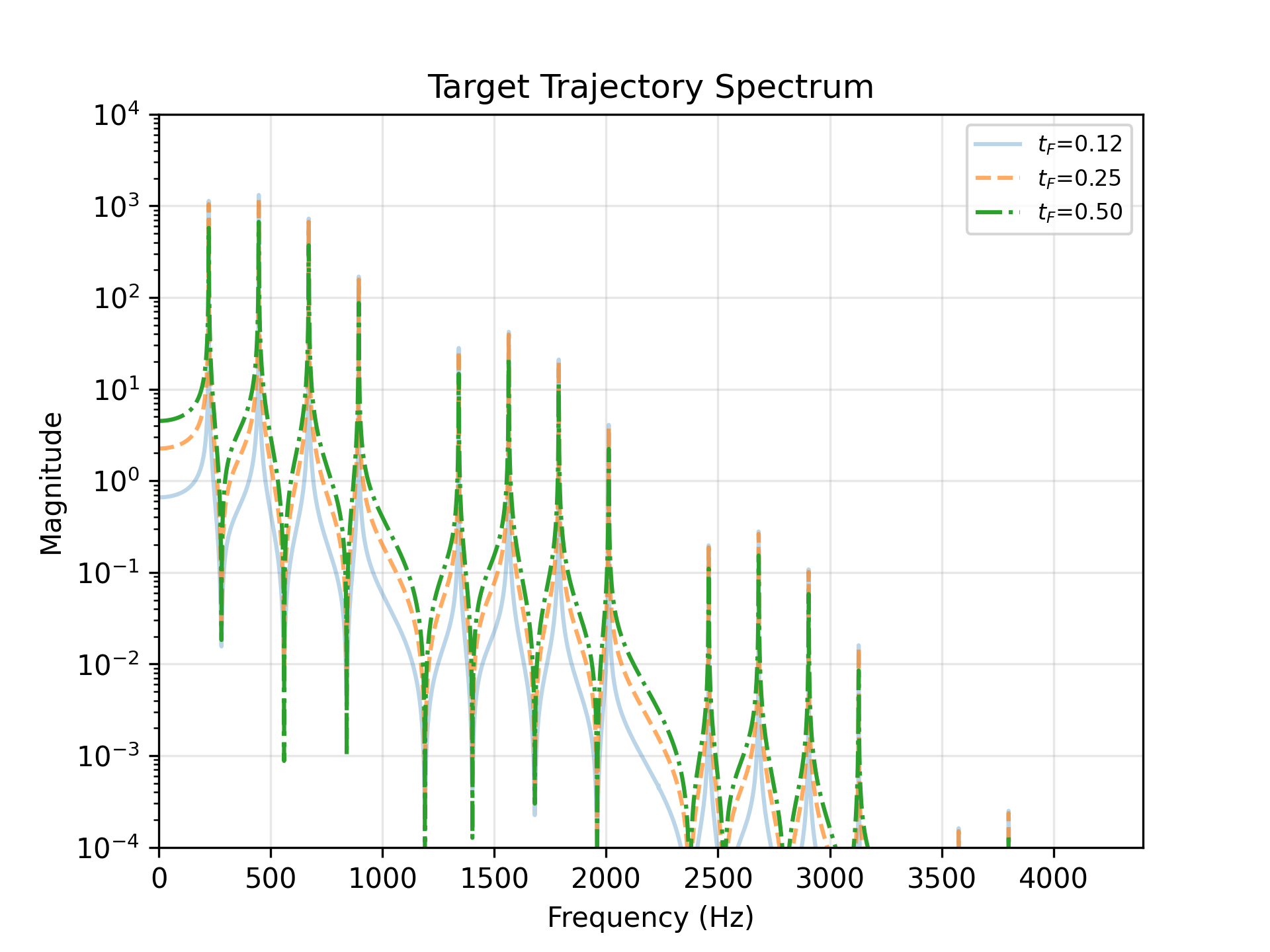
Forcing onset time \(t_F\)
- \(t_F=0.12\)
- \(t_F=0.25\)
- \(t_F=0.50\)
FDTD Example (1D Wave Equation) \(\tau\)
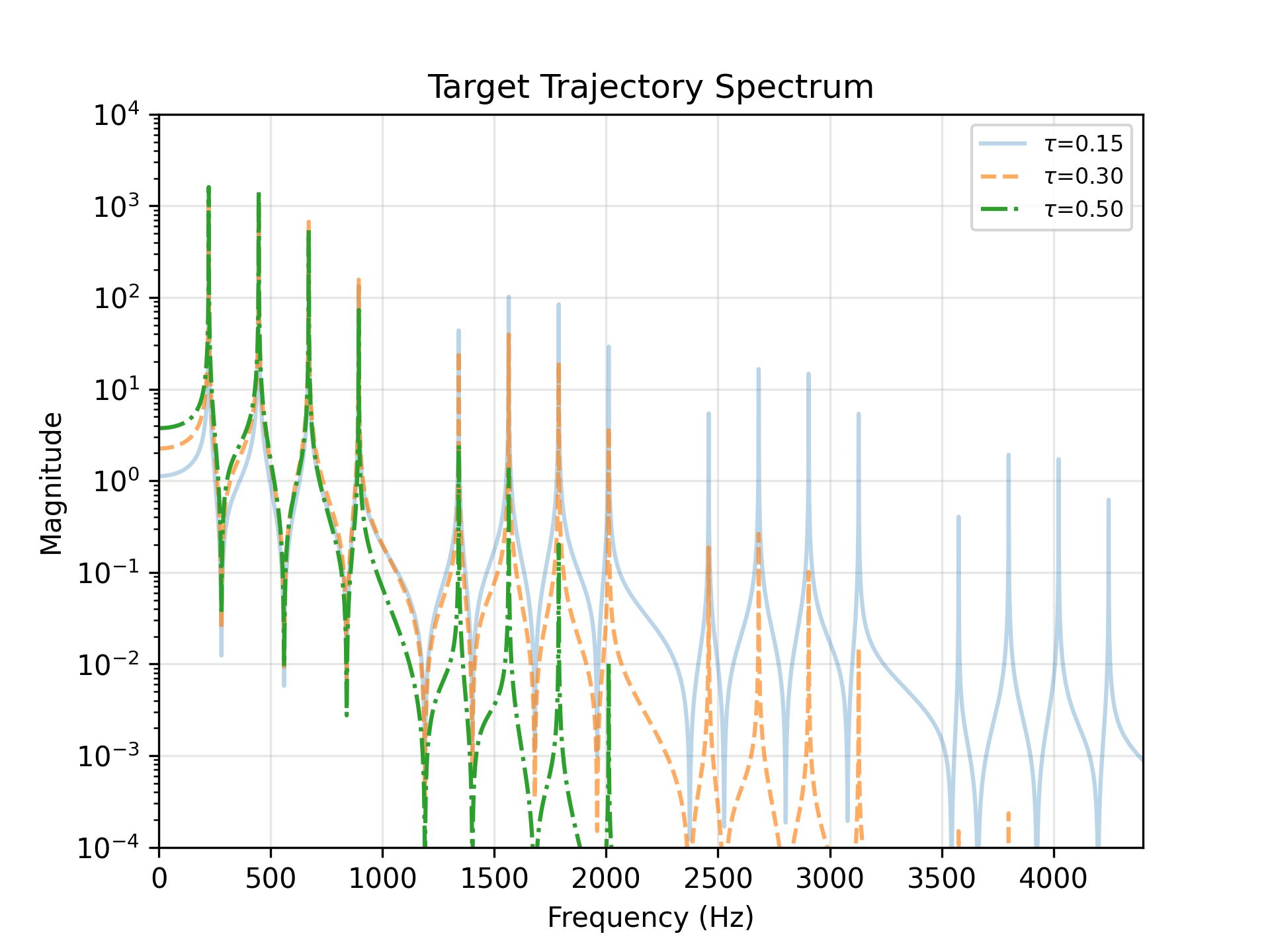
Forcing duration \(\tau\)
- \(\tau=0.15\)
- \(\tau=0.30\)
- \(\tau=0.50\)
Point Estimation using Diff. FDTD
- Given:
- Target observation \(\mathbf{\hat{u}} \in \mathbb{R}^{N_t}\)
- Differentiable simulator (e.g., FDTD simulation)
- excitation parameterized by \(\boldsymbol{\theta} = [x_F, t_F, \tau]\) where \(f_\tau(t - t_F) = \exp\!\left( - \frac{(t - t_F)^2}{2\tau^2} \right)\)
- \(\boldsymbol{\theta}\) randomly initialized in a reasonable range
- Objective:
Find the optimal parameter \(\boldsymbol{\theta}^*\)
\[ \boldsymbol{\theta}^* = \arg\min_{\boldsymbol{\theta}} \left\|\mathbf{u}(\boldsymbol{\theta}) - \mathbf{\hat{u}}\right\| \]
that can reproduce the target observation.
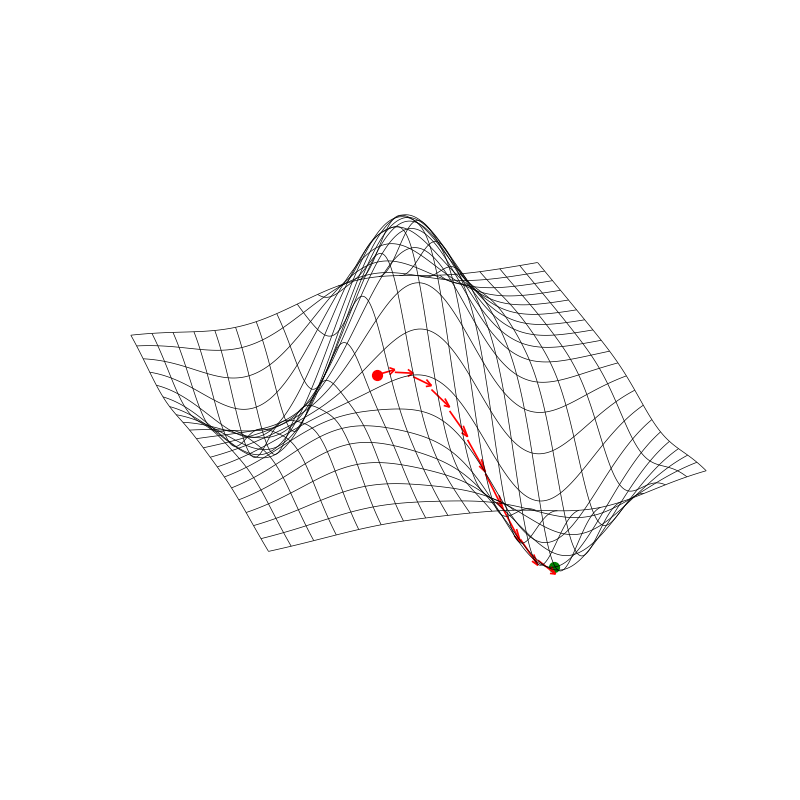
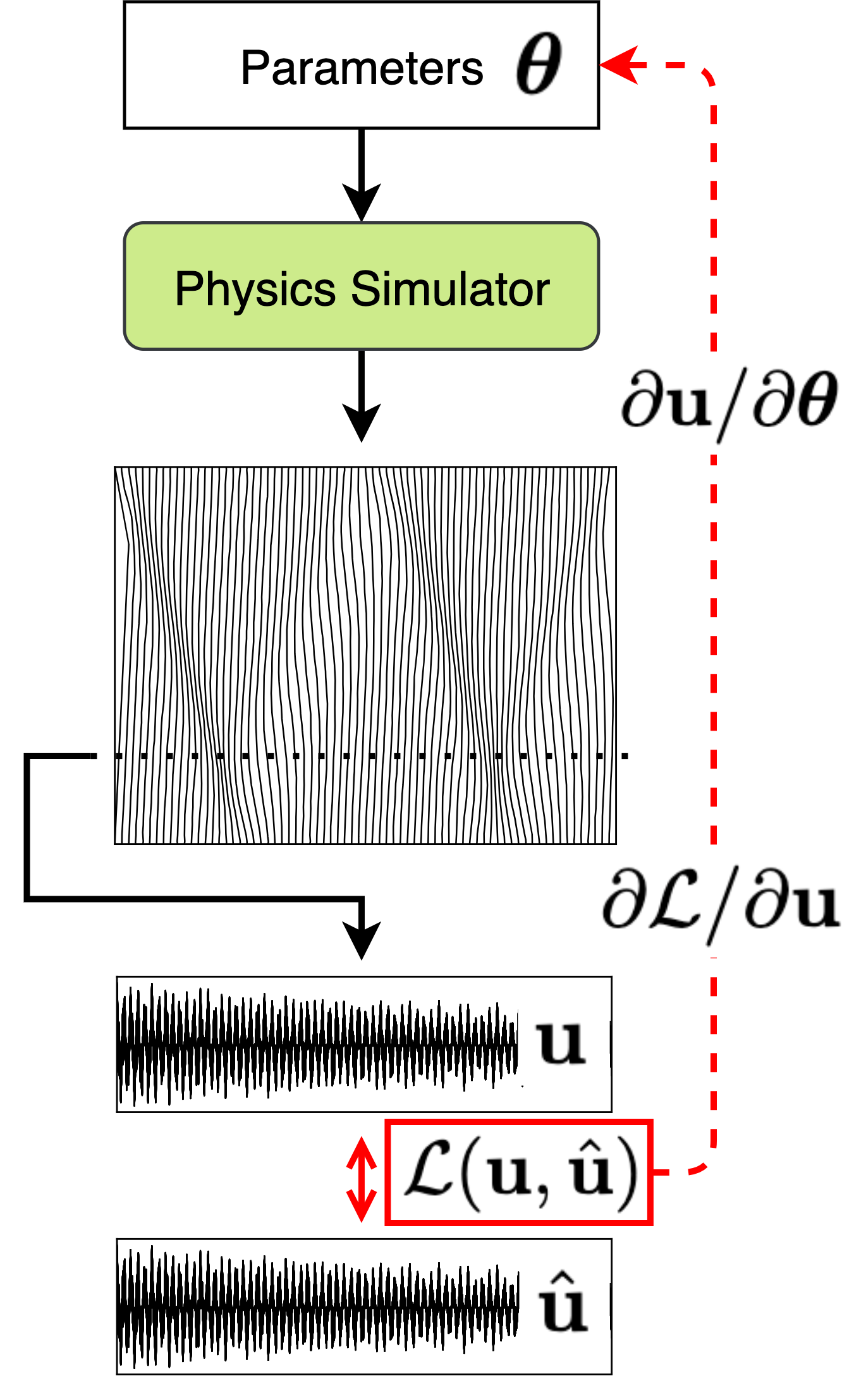
Point Estimation: Result 1
Two observation positions
- Estimated
- (left): \(x_F\) position
- (right): entire time-space trajectory
- at observation 1
- (left): gt vs est
- (right): time-error
- at observation 2
- (left): gt vs est
- (right): time-error
Point Estimation: Result 2
Different initializations on the parameters, subject to a single observation
- The optimization can lead to different solutions
Distribution Estimation using Diff. FDTD
- Given:
- Target observation \(\mathbf{\hat{u}} \in \mathbb{R}^{N_t}\)
- Differentiable simulator (e.g., FDTD simulation)
- Same excitation parametes \(\boldsymbol{\theta} = [x_F, t_F, \tau]\)
- But sampled from a certain distribution
- Objective:
Find the optimal \(\phi^*\) that \(\boldsymbol{\theta}\sim\boldsymbol{q}_{\phi^*}\)
\[ \phi^* = \arg\min_{\boldsymbol{\phi}} \mathbb{E}_{\theta\sim\boldsymbol{q}_{\phi}}\left\|\mathbf{u}(\boldsymbol{\theta}) - \mathbf{\hat{u}}\right\| \]
\(q_\phi\): parameter sampler (distribution generator)
Reparameterize \(\boldsymbol\theta=\boldsymbol\mu + \boldsymbol\sigma\cdot\boldsymbol\epsilon\) where \(\boldsymbol\epsilon\sim N(\mathbf{0}, \mathbf{I})\)
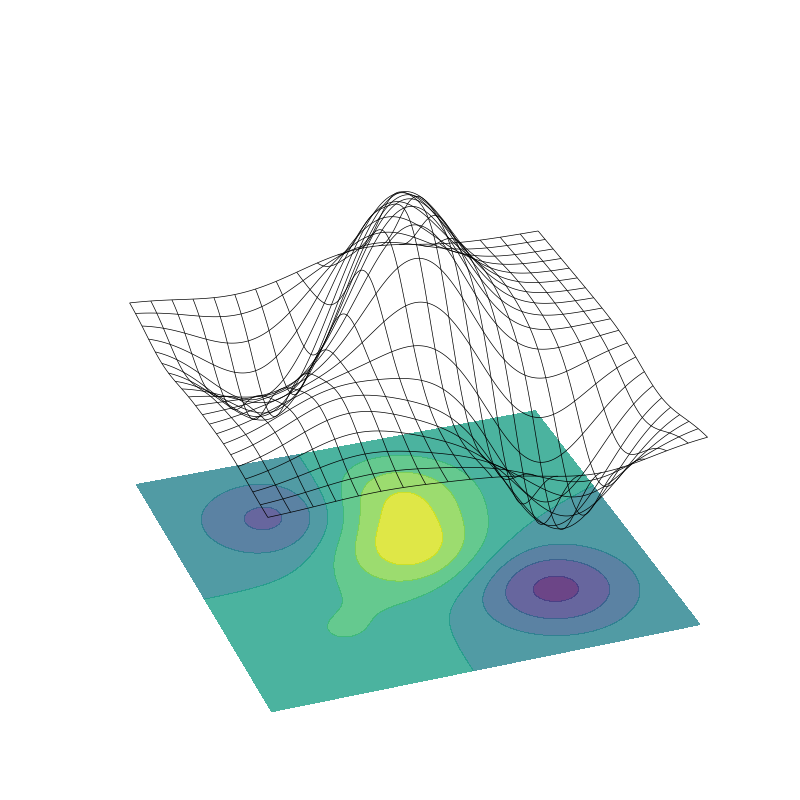
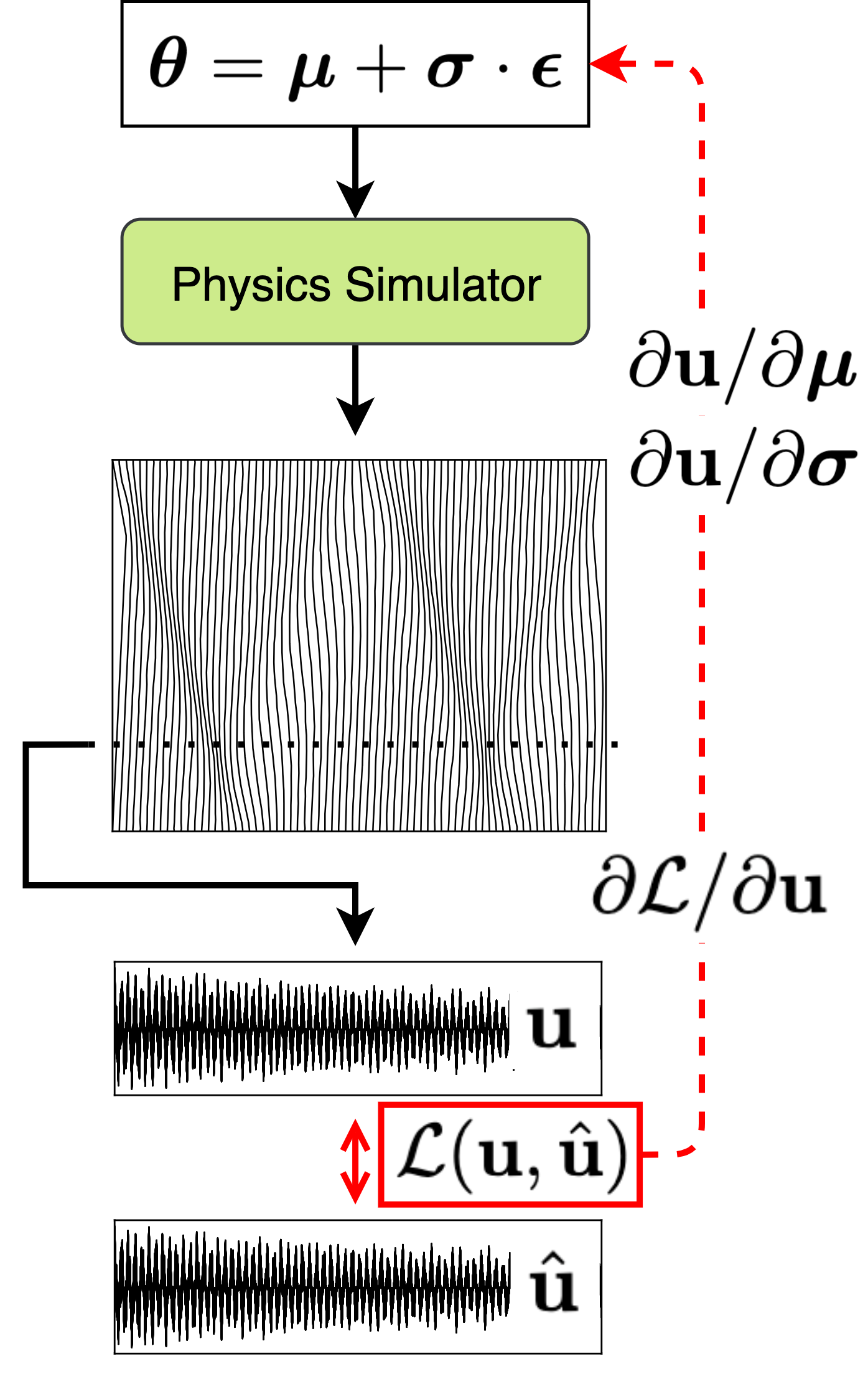
Distribution Estimation: Result 1
Two observation positions, sample eight \(\theta\)-s every iteration
Distribution Estimation: Result 2
One observation position, optimize two distribution modes
Distribution Estimation: Moving forward

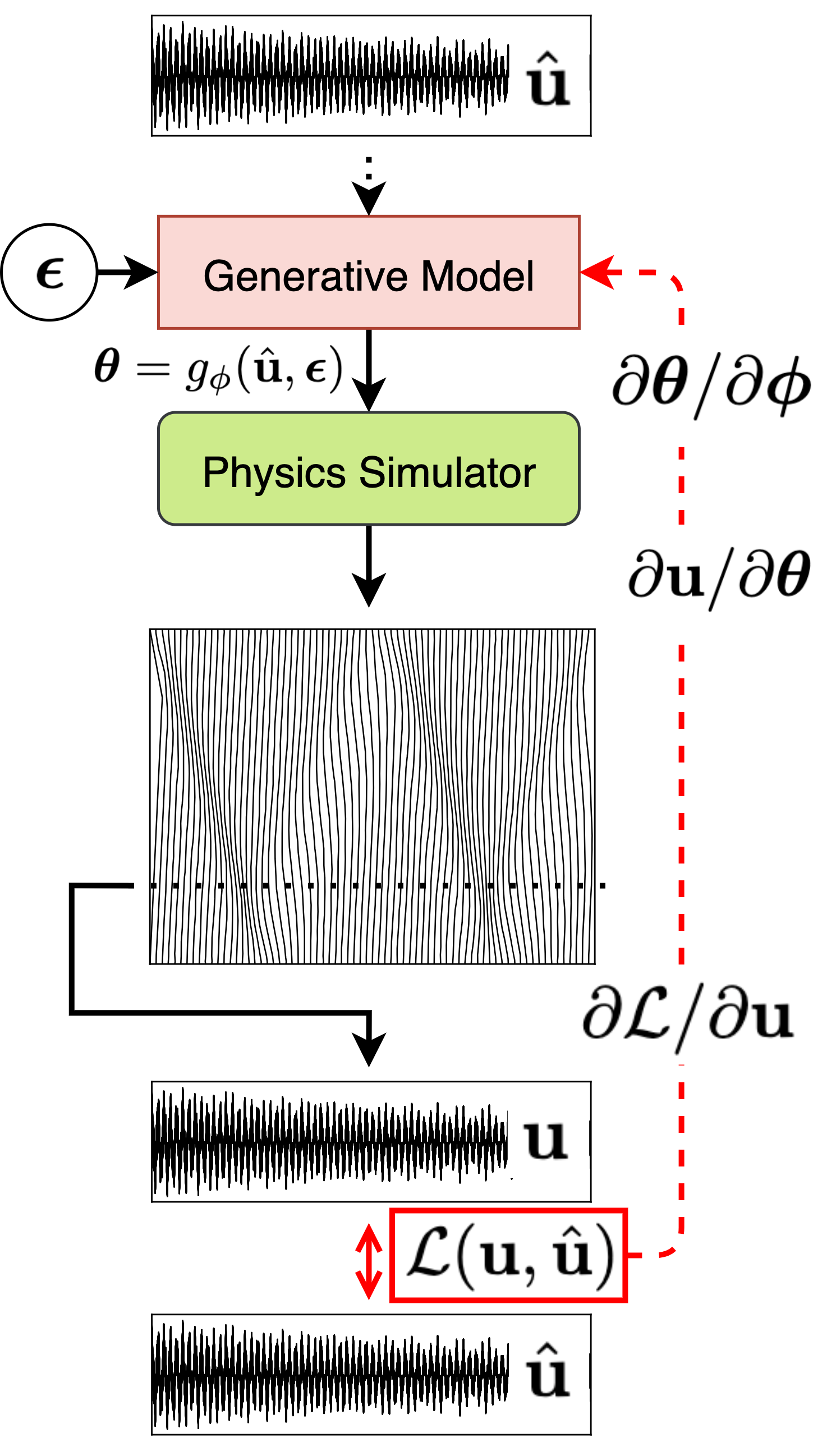
- Being able to compute \(\nabla_\theta \log p(u|\theta)\) can imply many
applicability in Bayesian methods- Markov Chain Monte Carlo (MCMC)
- Hamiltonian Monte Carlo (HMC)
- Sequential Monte Carlo (SMC)
- Utilizing real-measured \(\theta\)
- Securing a good initialization (critical!)
Programming Excercises
Link to the Codes
- Scan the QR code
- Or, access the same link by typing:
https://bit.ly/ismir-pm-pt4-notebook

- You can also find the same link by doing:
- type
https://ismir-physical-modeling.github.io/in your browser, - scroll down to Schedule,
- locate to current section (Differentiable … Parameter Estimation),
- click
</> Notebook.
- type
Remarks and Perspectives
Key Takeaways
- There can be multiple possible solutions for an inverse problem with given (partial) observations. (Kac 1966)
- Can use GD to backpropagate through the physical model to update the input parameters.
- Could be point estimation or distribution estimation.
- There can be many other approaches other than GD.
- Impelmentation choices: PyTorch, JAX, DiffTaichi (Hu et al. 2020)
- By design, the outputs of all possible solutions are physically plausible.
Perspectives
- Can be challenging to backpropagate through complicated models, possibly due to:
- Sub-iterations for nonlinear models (Lee et al. 2024)
- Implicit FDTD schemes, nonlinear scattering junctions
- Audio sample-rate recursions
- Gradient vanishing (Zheleznov et al. 2025)
- Operations that yields harsh non-smoothness (discontinuous derivatives)
- Friction, collisions, etc.
- Sub-iterations for nonlinear models (Lee et al. 2024)
- Can be extended to improved models with a diverse optimization criteria (Diaz and Sandler 2025)

